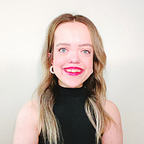Joint Pediatric Advisory Committee and Endocrinologic and Metabolic Drugs Advisory Committee Meeting (May 2018)
Pretty soon, I’m getting the opportunity to speak (again) with members of the U.S. Food and Drug Administration to express the urge for why there need to be pharmaceutical treatment options on the market for those with achondroplasia. The last time I spoke with the FDA was in 2018. Since I’m getting the chance to do it again soon, I thought I would share my words from then.
After my upcoming meeting with them soon, I will come back here and share my words.
Achondroplasia has impacted my life both physically and emotionally for 24 years. I have a 50% chance of passing achondroplasia to any future children I may have. New parents are often told, “Your child will be small, that’s all.” This is just false hope.
Physical limitations with achondroplasia are more than just being short. With our age, bodies take a toll on daily life. I know many who are wheelchair-bound for life due to spinal stenosis and spinal fusions, who need hearing aids and tracheotomies from complications of achondroplasia. Growing up, it was hard explaining to my friends that I couldn’t do something just because I was short. It was because of my spine, my neck, or because my arms and legs were not proportionate to my body. As a woman, dealing with feminine hygiene is not easy and if a spinal fusion is needed, it becomes more challenging. I couldn't wash my hair without assistance because my arms were too short to reach the top of my head. Driving was only an option with special equipment and sitting with the airbags dangerously close to my neck and chest. I couldn't get into the grocery store by myself because at 3'10" the automatic doors didn't sense I was there. Public restrooms are not only difficult because of getting on and off with fourteen-inch legs and short arms, but sometimes, it’s impossible to pull the door open to get out. It has always been a conscious struggle to be taken seriously as an adult. I would sense social discomfort from everyone I would meet. This makes meetings like job interviews difficult.
I became so frustrated with my height and lack of independence that I had limb lengthening. Each lengthening took about 7 to 8 months. I had three separate lengthening procedures to achieve my proportion and height. I would much rather have spent years taking a daily injection than turning metal pins in my legs for months. Although some of my peers with dwarfism embrace their physical novelty, I don't want any potential children I may have to be at risk of severe complications and disability. I don't want them to have to deal with all of the social struggles that can come from having dwarfism.
Having achondroplasia isn't just being small or short, it’s a lifetime of challenges, both physically and emotionally. If vosoritide has the ability to lessen complications and risks and eventually prevent them from happening at all, I think it is something that should be on the market.
